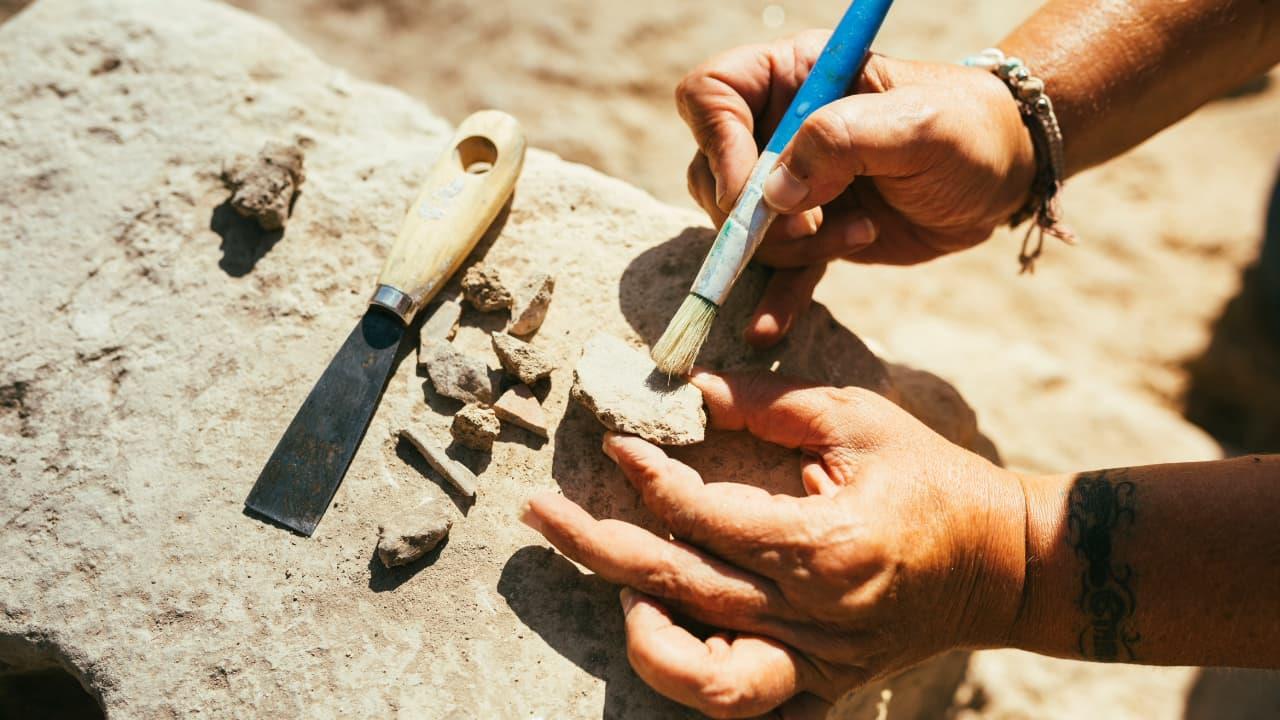
These Tiny Stones Could Change What We Know About Earth's Ancient Past
Studying how life began and evolved on Earth is like trying to solve a huge puzzle with many missing pieces. Since much of Earth's history happened billions of years ago, scientists often have very little direct evidence to work with. They rely on clues from ancient rocks, fossils, and computer models to piece everything together. Recently, a group of researchers, led by Professor Jordon Hemingway from ETH Zurich, found a new source of information: tiny iron-rich stones called ooids. The study was published in the journal Nature.
These small, egg-shaped grains might look like regular sand, but they contain important information about Earth's early oceans. They may also force scientists to rethink how life on our planet developed.
What Are Ooids and Why Do They Matter?
Ooids are small, round stones made of iron oxide that form on the sea floor. They grow in layers, similar to snowballs rolling across the seabed. Over time, they develop thin mineral coatings and also trap tiny amounts of organic carbon, the kind produced by living things. By studying the layers in ooids, researchers can look back in time and determine how much organic carbon was in the ocean when the ooids were formed.
Using this method, the team was able to look as far back as 1.65 billion years. They found something very surprising: between 1,000 and 541 million years ago, the amount of dissolved organic carbon in the ocean was much lower than scientists had previously believed.
This challenges existing theories about Earth's evolution, including how complex life forms, ice ages, and oxygen levels developed.
Why Is Carbon in the Ocean So Important?
Carbon is one of the basic building blocks of life. In the ocean, it exists in several forms. Some carbon comes from CO2 in the air, which dissolves into the sea. Another source is photosynthesis, when tiny organisms like phytoplankton use sunlight to create organic carbon from CO2.
When these organisms die, their remains slowly sink to the ocean floor, a process called marine snow. If they aren't eaten on the way down, the carbon is stored in the sea floor for millions of years.
There's also another form called dissolved organic carbon (DOC)- tiny carbon molecules that float freely in the water. Today, it holds around 200 times more carbon than is found in all marine life combined.
Rethinking Earth's“Oxygen Revolution”
Until now, scientists believed that Earth's oceans were once filled with large amounts of dissolved organic carbon, especially between 1,000 and 541 million years ago. But the new research tells a different story. According to Professor Hemingway's team, the ocean during that time actually had 90–99% less dissolved organic carbon than today. It was only after the second oxygen surge that carbon levels rose to modern amounts, around 660 billion tonnes.
What Caused the Carbon Drop?
Lead author Nir Galili suggests that the drop in dissolved carbon might have happened because organisms were growing larger. When these larger, heavier organisms died, they sank more quickly to the bottom of the ocean. But back then, the deep sea lacked oxygen. Without oxygen, their carbon couldn't be broken down and recycled This caused the dissolved carbon reservoir to shrink dramatically. Only when oxygen eventually reached the deeper parts of the ocean could that carbon be recycled.
Why It Matters Today
Although this research looks far back in time, it has important lessons for our future. It helps scientists better understand how life evolved on Earth, and possibly how it could evolve on other planets. It also shows how changes in oxygen and carbon can completely reshape life on Earth.
Due to pollution and global warming, oxygen levels in the ocean are falling. This could affect marine life and carbon storage in ways we don't fully understand yet. The study shows how fragile and complex Earth's systems really are and why it's so important to protect them.
Legal Disclaimer:
MENAFN provides the
information “as is” without warranty of any kind. We do not accept
any responsibility or liability for the accuracy, content, images,
videos, licenses, completeness, legality, or reliability of the information
contained in this article. If you have any complaints or copyright
issues related to this article, kindly contact the provider above.
Most popular stories
Market Research

- New Crypto Mutuum Finance (MUTM) Nears $17 Million Raised Ahead Of October
- Seascape Launches First Tokenized BNB Treasury Strategy On Binance Smart Chain
- B2PRIME Accelerates Institutional Expansion With Strategic Hires From Isam Securities
- VUBE Exchange Announces Unified Account Integration Across VUBE Pro, VUBE Plus, And VUBE Max
- Dubai At The Centre Of Global Finance: Forex Expo 2025 Redefines The Trading Landscape
- Bitmex Study Finds Cryptocurrency Funding Rates Positive 92% Of The Time, Revealing A Structural Market Bias



















Comments
No comment